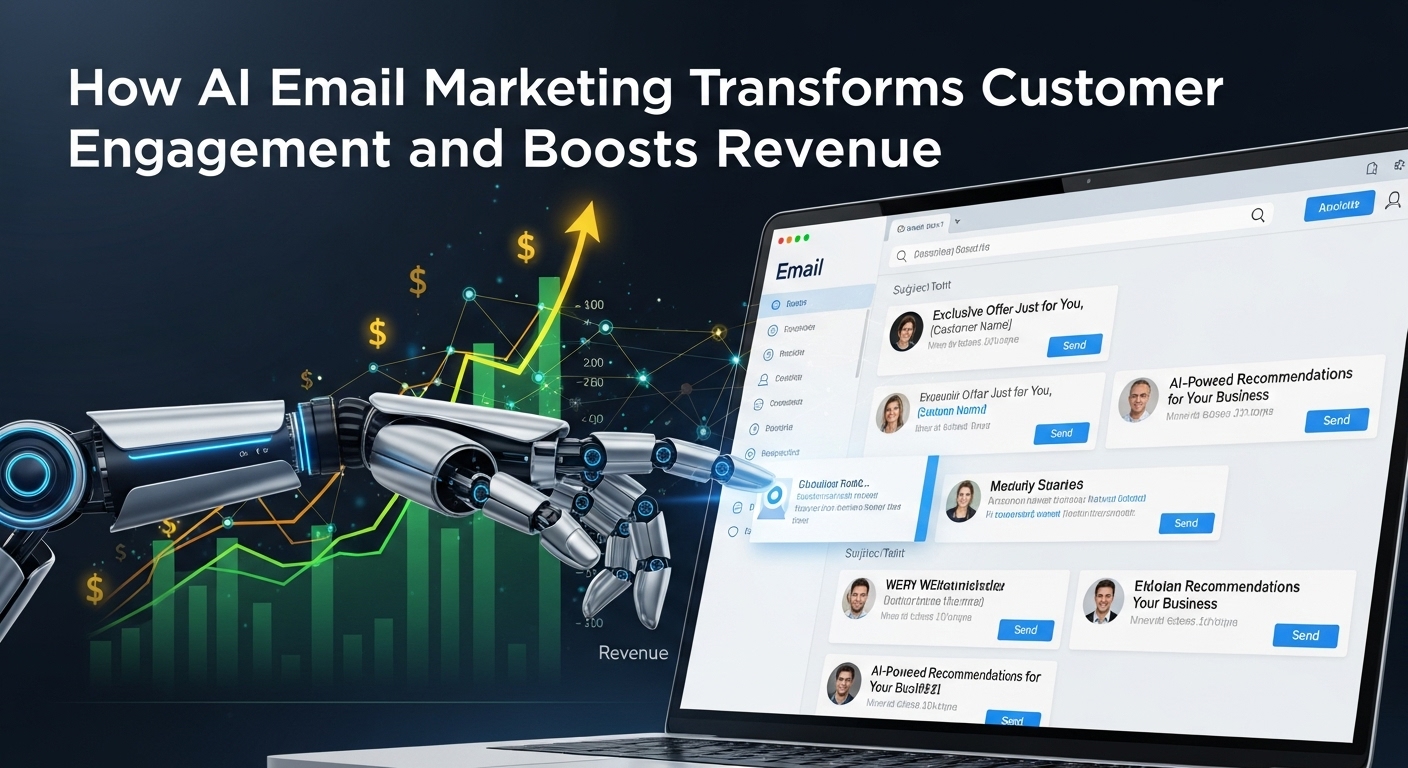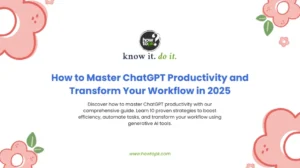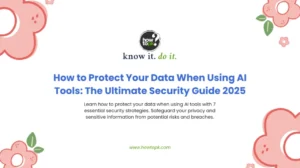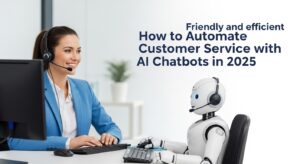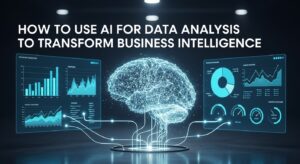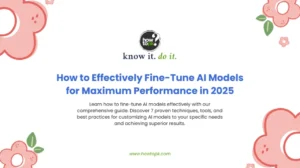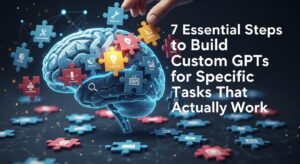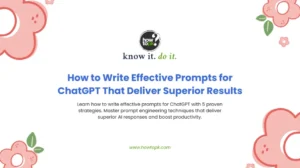AI email marketing is revolutionizing how businesses connect with their customers, delivering unprecedented personalization at scale. In today’s competitive digital landscape, generic email campaigns simply don’t cut it anymore. Consumers expect tailored experiences that speak directly to their needs, preferences, and behaviors.
This comprehensive guide explores seven powerful strategies for leveraging artificial intelligence in your email marketing campaigns, helping you achieve higher engagement rates, increased conversions, and stronger customer relationships.
What is AI Email Marketing?
AI email marketing combines artificial intelligence technologies with traditional email marketing to create smarter, more effective campaigns. By analyzing vast amounts of customer data, AI can predict behaviors, optimize send times, personalize content, and automate complex decision-making processes that would take humans countless hours to execute.
The technology encompasses machine learning algorithms, natural language processing, predictive analytics, and automated decision trees that work together to enhance every aspect of your email marketing strategy.
Why AI Email Marketing Matters More Than Ever
Traditional email marketing approaches are becoming increasingly ineffective. Consider these compelling statistics:
- Personalized emails deliver 6x higher transaction rates than generic messages
- 80% of consumers are more likely to purchase from brands that provide personalized experiences
- AI-powered email campaigns show 37% higher open rates compared to traditional campaigns
- Companies using advanced personalization generate 40% more revenue than their competitors
7 Powerful AI Email Marketing Strategies
1. Intelligent Email Segmentation and Targeting
Traditional segmentation relies on basic demographics and purchase history. AI email marketing takes this concept to extraordinary new levels by analyzing hundreds of data points to create micro-segments based on:
- Browsing behavior patterns
- Purchase frequency and timing
- Content engagement preferences
- Device and channel preferences
- Seasonal buying trends
- Price sensitivity indicators
Implementation Strategy:
Start by integrating your email platform with customer data platforms (CDP) that support AI-driven segmentation. Popular options include Salesforce Marketing Cloud, HubSpot, and Klaviyo.
Create dynamic segments that automatically update based on real-time customer behaviors. For example, segment customers who frequently browse but rarely purchase, then create targeted campaigns addressing common purchase barriers.
2. Predictive Content Personalization
Email personalization powered by AI goes far beyond inserting a customer’s name in the subject line. Advanced systems analyze individual customer preferences to predict which products, content topics, and messaging approaches will resonate most effectively.
AI algorithms can determine:
- Optimal product recommendations based on browsing and purchase history
- Content topics that align with individual interests
- Messaging tone and style preferences
- Visual elements that drive engagement
- Call-to-action placement and wording
Best Practices for Implementation:
Strategy | Description | Expected Impact |
Dynamic Product Recommendations | AI suggests products based on individual behavior patterns | 25-35% increase in click-through rates |
Personalized Subject Lines | AI generates subject lines tailored to individual preferences | 15-25% improvement in open rates |
Custom Content Blocks | AI selects relevant content sections for each recipient | 30-45% boost in engagement time |
Individualized Send Times | AI determines optimal send times for each subscriber | 20-30% higher open rates |
3. Advanced Marketing Automation Workflows
Marketing automation reaches new heights when powered by artificial intelligence. Traditional automation relies on predetermined triggers and linear decision trees. AI-enhanced automation creates dynamic, adaptive workflows that evolve based on customer responses and behaviors.
Smart automation workflows can:
- Automatically adjust messaging based on engagement levels
- Modify send frequency based on individual preferences
- Trigger cross-sell and upsell campaigns at optimal moments
- Re-engage dormant subscribers with personalized win-back campaigns
- Adjust campaign elements in real-time based on performance data
Advanced Workflow Examples:
- Welcome Series Optimization: Instead of sending the same welcome series to all subscribers, AI analyzes new subscriber behavior during their first few interactions to customize subsequent emails in the series.
- Abandoned Cart Recovery: AI determines the optimal number of follow-up emails, timing between messages, and incentive amounts based on individual customer value and purchase probability.
4. Predictive Analytics for Email Performance
Predictive analytics email capabilities allow marketers to forecast campaign performance before hitting send. AI algorithms analyze historical data, current market conditions, and individual customer behaviors to predict:
- Open rate probabilities for different subject lines
- Click-through rate potential for various content approaches
- Conversion likelihood based on timing and messaging
- Unsubscribe risk for specific segments
- Optimal send times for maximum engagement
This predictive power enables data-driven decision-making that significantly improves campaign performance while reducing the risk of sending ineffective messages.
5. Dynamic Content Optimization
AI continuously optimizes email content elements to maximize performance. Unlike traditional A/B testing that compares two static versions, AI testing evaluates multiple variables simultaneously and makes real-time adjustments.
Key optimization areas include:
- Subject line variations
- Header images and graphics
- Call-to-action button colors and placement
- Content layout and structure
- Product showcase arrangements
- Social proof elements
AI systems like Phrasee and Persado specialize in generating and optimizing email copy using natural language generation and emotional AI.
6. Behavioral Trigger Optimization
AI email marketing excels at identifying subtle behavioral patterns that indicate customer intent. Advanced systems can detect micro-signals that humans might miss, such as:
- Specific page viewing sequences that indicate purchase intent
- Time spent on product pages that suggests serious consideration
- Email engagement patterns that predict churn risk
- Cross-device behavior that reveals customer journey complexity
These insights enable highly targeted trigger campaigns that reach customers at precisely the right moment with the most relevant message.
7. Advanced Email Segmentation Through Machine Learning
Machine learning algorithms continuously analyze customer data to identify new segmentation opportunities. Unlike static segments, AI-driven email segmentation evolves automatically as customer behaviors change.
Sophisticated segmentation approaches include:
- Lifetime value prediction segments
- Churn risk probability groups
- Purchase timing prediction clusters
- Content preference categories
- Channel preference segments
- Engagement level classifications
Choosing the Right AI Email Marketing Tools
Selecting the appropriate tools is crucial for AI email marketing success. Consider these top-rated platforms:
Enterprise Solutions:
- Salesforce Marketing Cloud Einstein – Comprehensive AI capabilities for large organizations
- Adobe Campaign – Advanced personalization and predictive analytics
- Oracle Eloqua – Sophisticated lead scoring and behavioral analysis
Mid-Market Solutions:
- HubSpot Marketing Hub – User-friendly AI features with comprehensive CRM integration
- Klaviyo – Excellent for e-commerce with strong predictive analytics
- Mailchimp – Accessible AI features for growing businesses
Specialized AI Tools:
- Phrasee – AI-powered email copywriting optimization
- Persado – Emotional AI for message optimization
- SendTime – AI-powered send time optimization
Implementation Best Practices
Getting Started with AI Email Marketing
Phase 1: Data Foundation (Weeks 1-2)
- Audit existing customer data quality and completeness
- Integrate email platform with CRM and analytics tools
- Establish data collection processes for behavioral tracking
- Set up proper tracking and attribution systems
Phase 2: Basic AI Implementation (Weeks 3-6)
- Start with simple predictive segmentation
- Implement send time optimization
- Begin testing AI-generated subject lines
- Set up basic behavioral triggers
Phase 3: Advanced Optimization (Weeks 7-12)
- Deploy sophisticated personalization algorithms
- Launch predictive analytics dashboards
- Implement complex automation workflows
- Begin advanced content optimization testing
Measuring AI Email Marketing Success
Track these key performance indicators to measure your AI email marketing effectiveness:
Metric | Traditional Benchmark | AI-Enhanced Target |
Open Rate | 20-25% | 30-40% |
Click-Through Rate | 2-5% | 8-12% |
Conversion Rate | 1-3% | 5-8% |
Revenue Per Email | $0.10-0.20 | $0.40-0.80 |
List Growth Rate | 15-25% annually | 40-60% annually |
Common Challenges and Solutions
Data Quality Issues
- Challenge: AI systems require high-quality, comprehensive data to function effectively.
Integration Complexity
- Challenge: Connecting multiple systems and data sources can be technically challenging.
Privacy and Compliance Concerns
- Challenge: AI requires extensive data collection while maintaining privacy compliance.
- Solution: Implement privacy-by-design principles and use tools like OneTrust for compliance management.
Future Trends in AI Email Marketing
- The AI email marketing landscape continues evolving rapidly. Key trends to watch include:
- Advanced Natural Language Processing: AI will generate increasingly sophisticated and human-like email content that adapts to individual communication styles.
- Cross-Channel Intelligence: AI will optimize email campaigns based on customer interactions across all digital touchpoints, creating truly omnichannel experiences.
- Real-Time Personalization: Dynamic content will update in real-time based on current customer context, weather, location, and recent behaviors.
- Voice and Conversational AI Integration: Email campaigns will incorporate voice messages and interactive elements that enable two-way conversations.
Conclusion
AI email marketing represents a fundamental shift from generic mass communication to intelligent, personalized customer engagement. By implementing these seven strategies, businesses can achieve remarkable improvements in email performance while building stronger customer relationships.
The key to success lies in starting with solid data foundations, choosing appropriate tools for your business size and complexity, and gradually implementing more sophisticated AI capabilities as your team develops expertise.
As AI technology continues advancing, early adopters who master these techniques will maintain significant competitive advantages in customer engagement and revenue generation.
The future of email marketing is intelligent, personalized, and powered by AI. The question isn’t whether to adopt these technologies, but how quickly you can implement them to transform your customer communications and drive exceptional business results.

